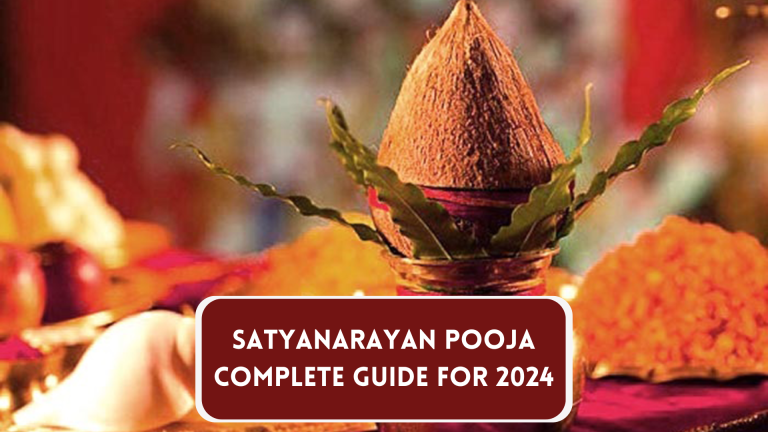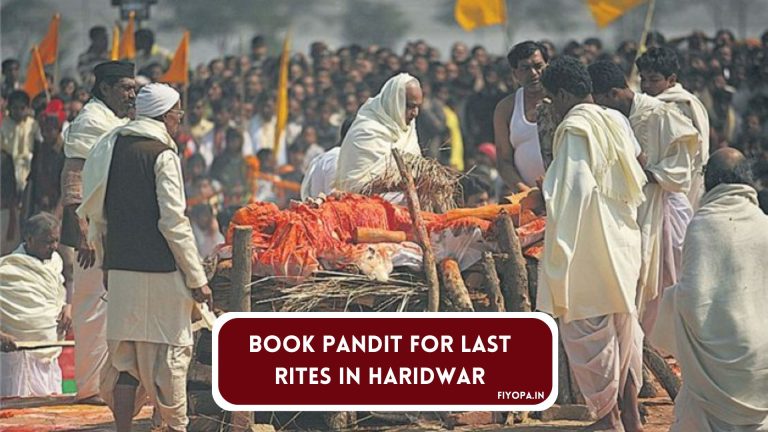Dhanteras Puja Vidhi: How to conduct a successful puja at your workplace

On Dhanteras, the first day of Diwali, it is believed to be an auspicious time to invite prosperity and success. This year, consider bringing these blessings into your professional environment. This post will provide a simplified Dhanteras Puja Vidhi for conducting a puja at your workplace. Discover how to set up a sacred space, choose appropriate offerings, and perform the puja for a harmonious and prosperous work setting.
Significance of Dhanteras Puja
Dhanteras, also known as Dhanatrayodashi, is the first day of the five-day Diwali festival celebrated by Hindus in India and around the world. The word “Dhanteras” comes from the Sanskrit words “dhan” meaning wealth and “teras” meaning thirteenth. It falls on the thirteenth lunar day of Krishna Paksha in the Hindu calendar month of Ashwin, typically in October or November.
Dhanteras Puja holds significance as it is associated with wealth and prosperity. People worship Goddess Lakshmi on this day to seek her blessings for wealth, prosperity, and well-being through various rituals and pujas.
On Dhanteras, it is common for people to clean and decorate their homes, purchase new items like utensils or precious metals for good luck, and light lamps as a symbol of prosperity and enlightenment.
Dhanteras is a Hindu festival where Goddess Lakshmi and Lord Kubera are worshipped for bringing prosperity, success, and abundance into one’s life through devotion and sincerity in observing rituals.
Dhanteras Puja is an important event in Hindu culture, signifying the start of the festive season and being believed to bring blessings for prosperity and well-being, making it a favorable time for new ventures and investments.
Preparation for Dhanteras Puja
Preparation for Dhanteras Puja includes following several steps to ensure the rituals are performed smoothly and with devotion.

- Cleaning: Before performing the puja, it is recommended to clean the area thoroughly to remove any negativity and welcome positive energy.
- Decoration: Enhance the festive ambiance in your home by decorating with colorful rangolis, flowers, lights, and traditional decorations like torans, marigold garlands, and mango leaves.
- Shopping: Purchase new utensils, gold, silver, or other valuable items as it is considered auspicious to buy something new on Dhanteras. Many people also buy utensils made of copper, brass, or steel as a symbol of prosperity.
- Arrangement of Puja Items: Gather all the necessary puja items, including idols or images of Goddess Lakshmi and Lord Kubera, a thali (plate), diyas (earthen lamps), incense sticks, camphor, flowers, fruits, sweets, rice, and sacred items like sandalwood paste and kumkum (vermilion).
- Setting up the Altar: Create a clean and sacred space for the puja. Place a clean cloth or a small altar/table where you will arrange the puja items. Decorate the altar with flowers and rangolis.
- Offerings: Prepare offerings for the puja, such as sweets, fruits, and other traditional delicacies. You can also prepare prasad (offerings) like kheer (rice pudding) or halwa (sweet pudding) to offer to the deities.
- Lighting Lamps: Light diyas and lamps throughout the house to symbolize the victory of light over darkness and to welcome Goddess Lakshmi into your home.
- Puja Rituals: Familiarize yourself with the specific rituals and mantras associated with Dhanteras Puja. You can consult a priest or refer to religious texts for guidance on performing the puja correctly.
- Inviting Guests: Invite family members, friends, and neighbors to join you in the puja celebrations. Sharing the joy of the festival with loved ones adds to the festive spirit.
- Observing Fast: Some people choose to observe a fast on Dhanteras as a form of devotion. If you plan to fast, make necessary arrangements for food and drink accordingly.
By following these preparations, one can conduct the Dhanteras Puja with reverence and devotion, inviting blessings of prosperity and abundance into their life.
Dhanteras puja samagri List
| Item | Quantity |
|---|---|
| A wooden chowki | 1 |
| A fresh red or yellow cloth for covering it | 1 |
| Idols/images of Goddess Lakshmi and Ganesh | 1 each |
| You may also use an idol/image of Dhanvatari or Lord Kubera | Optional |
| A silver coin with images of Goddess Lakshmi and Lord Ganesha engraved on it | 1 |
| Lotuses for Goddess Lakshmi | As required |
| Flowers and Durva grass for Lord Ganesha | As required |
| Flowers for other deities | As required |
| Tulsi leaves for Lord Dhanvantari | As required |
| Separate tamboolams for Goddess Lakshmi, Lord Ganesha/ Lord Dhanvantari or Lord Kubera. The tamboolam consists of two paan leaves, supari, fruits, a whole coconut, haldi, kumkum, sweets and Dakshina | As required |
| Gangajal | As required |
| Haldi | As required |
| Roli | As required |
| Kalava | As required |
| Sugandham (perfume) | As required |
| Kumkum | As required |
| Chandan | As required |
| Oil/ghee | As required |
| Lamps – one brass and one earthen | 1 each |
| Cotton wicks | As required |
| Agarbatti | As required |
| Dhoop | As required |
| Kapur (camphor) | As required |
| Panchamrit | As required |
| Laung and Elaichi | As required |
| Bhog/Naivedya | As required |
Dhanteras Puja Vidhi
The Dhanteras Puja Vidhi involves various steps and prayers to be completed with devotion and sincerity. Here is a general outline of the Dhanteras Puja Vidhi:
- Preparation:
- Clean the puja area and decorate it with rangolis, flowers, and lights.
- Arrange all the puja items mentioned earlier in the table format.
- Setting Up the Altar:
- Place a wooden chowki covered with a fresh red or yellow cloth as the altar.
- Place idols or images of Goddess Lakshmi and Lord Ganesha on the chowki.
- If desired, include an idol or image of Dhanvatari or Lord Kubera.
- Keep the silver coin with images of Goddess Lakshmi and Lord Ganesha engraved on it on the altar.
- Arrange lotuses for Goddess Lakshmi and flowers for other deities.
- Keep separate tamboolams for each deity as per the table format.
- Invocation (Pran Pratishtha):
- Begin by invoking the presence of the deities by chanting mantras and offering flowers and water.
- Recite prayers to invite Goddess Lakshmi, Lord Ganesha, and any other deity you wish to worship.
- Lighting the Lamps:
- Light the brass lamp and the earthen lamp using cotton wicks soaked in oil or ghee.
- Offer camphor (kapur) to the fire while chanting mantras.
- Offerings (Naivedya):
- Prepare bhog/naivedya such as sweets, fruits, and other delicacies to offer to the deities.
- Place the offerings in front of the idols along with tulsi leaves and other sacred items.
- Prayers and Mantras:
- Recite prayers and mantras dedicated to Goddess Lakshmi, Lord Ganesha, and other deities.
- Offer flowers, incense sticks, and dhoop while chanting the mantras.
- Tamboolam Offering:
- Offer tamboolams to each deity, consisting of paan leaves, supari, fruits, coconut, haldi, kumkum, sweets, and Dakshina.
- Conclusion:
- Conclude the puja by seeking blessings from the deities for prosperity, wealth, and well-being.
- Distribute prasad (blessed offerings) to family members and guests present during the puja.
- Aarti:
- Perform aarti (a ritual of waving lighted lamps) to the deities while singing devotional songs or chants.
- Circulate the aarti plate among all present to receive blessings.
- Prasad Distribution:
- Distribute prasad to all attendees as a symbol of divine blessings.
It is recommended to consult a pandit or refer to religious texts for detailed guidance on performing the Dhanteras Puja Vidhi, as customs and traditions may vary among different regions and families.
Conducting the Puja at the Workplace
In addition to the step-by-step guide for Dhanteras puja vidhi previously outlined, there are specific considerations to take into account in a workplace setting.
- Space and Time: Select a clean and quiet area in your office for the puja. Make sure it is free from distractions and interruptions. If you are inviting colleagues, ensure the space is large enough for everyone. Choose a time that won’t disrupt work schedules, such as during lunch breaks or after work hours.
- Inclusivity and Respect: Respect colleagues with diverse religious or cultural backgrounds. Participation in the puja should be voluntary. Keep the puja small and minimize disruptions. Consider providing an alternative activity for those who choose not to participate.
- Company Culture: Consider the company culture when deciding on the style of a puja. For a formal environment, a low-key puja may be more appropriate, while in a more casual setting, adding decorative elements like rangolis can enhance the festive atmosphere.
- Sound and Aroma: It is recommended to be aware of noise levels in the workplace and consider using quiet mantras or speaking them in a low voice. Using limited or lightly scented incense is also suggested to prevent overpowering others with strong smells.
- Cleanup: Properly dispose of puja items, such as flowers and prasad offerings, following any specific waste disposal guidelines in your workplace..
By considering these factors, you can organize a meaningful Dhanteras puja at your workplace that promotes a positive and prosperous work environment while respecting everyone’s beliefs and preferences.
Conclusion:
Dhanteras is the start of Diwali, a time to welcome prosperity and success. This year, let’s bring these blessings into our work environments. By following a simple Dhanteras Puja Vidhi, we can create a harmonious and prosperous workplace. Setting up a sacred space, selecting suitable offerings, and performing the puja sincerely can bring in positivity and abundance. May this Dhanteras bring prosperity and success to everyone!
FAQs:
A: Dhanteras marks the beginning of Diwali and is considered an auspicious time to invite prosperity and success into our lives by worshiping Goddess Lakshmi and seeking her blessings.
A: Traditional customs include cleaning and decorating homes, purchasing new items like utensils or precious metals, lighting lamps, and performing rituals to honor Goddess Lakshmi and Lord Kubera.
A: You can conduct Dhanteras Puja at your workplace by setting up a clean and quiet area, arranging puja items, inviting colleagues to participate voluntarily, performing rituals with respect and inclusivity, and ensuring proper cleanup afterward.
A: Offerings typically include sweets, fruits, flowers, incense sticks, and diyas. Additionally, you can offer tamboolams containing paan leaves, supari, fruits, coconut, haldi, kumkum, sweets, and dakshina to the deities.
Related Read:- Dhanteras 2024: Date, Time, Puja Muhurat, and Significance







